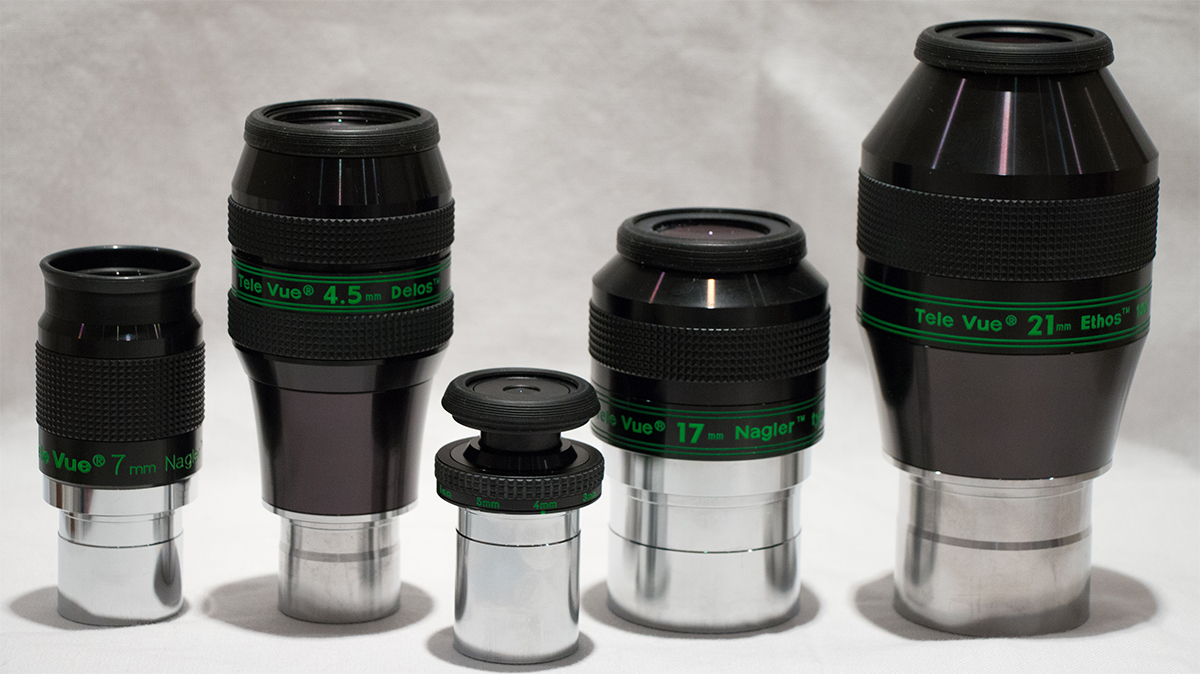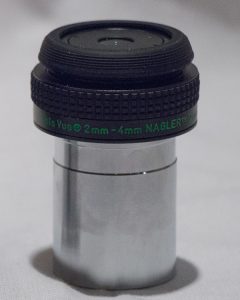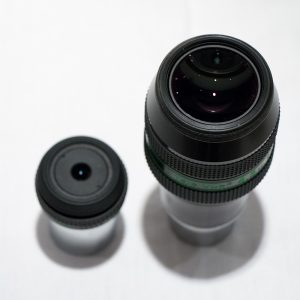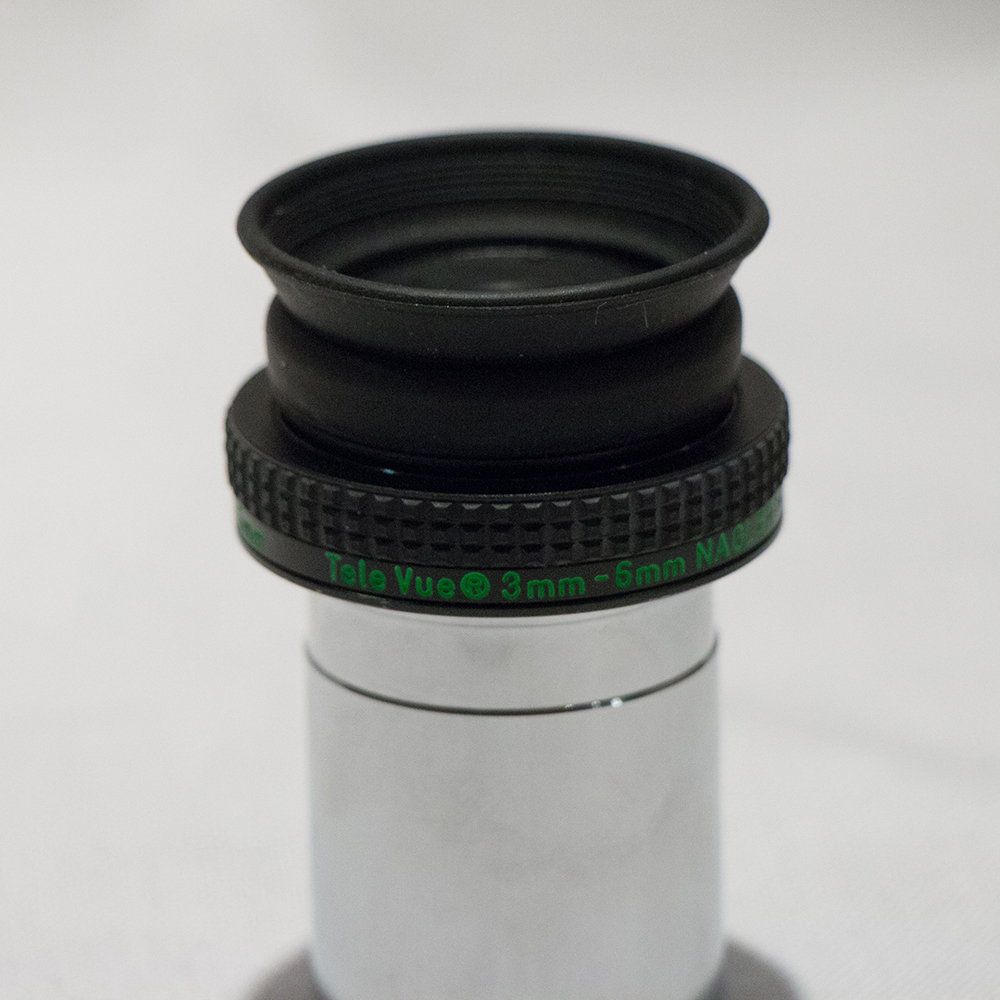Back in 2011 I spent two weeks touring round the beautiful, varied landscapes of Namibia which culminated in a 4-night stay at the Sossusvlei Desert Lodge in the NamibRand Nature Reserve. For an amateur astronomer, this is a rather special location. Rated a gold dark sky reserve by the IDA, even naked-eye astronomy is an incredibly rewarding experience. It is not an exaggeration to state that you can only tell where the horizon is, because the stars stop, it really is that dark. Fortunately, the lodge also boasts a 12” SCT, and I made very good use of it during my stay.
Not only did I fall in love with the southern skies (and I am more than a little bit jealous of our southern-hemisphere located astronomer cousins), but it also demonstrated beyond any question, just how valuable a truly dark-sky site is for astronomy. Sadly, that type of sky is rather hard to locate in the UK, and so when we booked a two week holiday to Oman in 2012, which included several days in the desert, hundreds of kilometres from any settlements of note, the chance to undertake some astronomy under what would be incredibly dark skies was too much to resist.
However, at the time I did not own a scope that was airline portable, so I set about putting together a travel astronomy package. I quickly settled on the APM LZOS 105/650 triplet Apo (you can read that review here), which has a transportation length of only 17.5”, and a Gitzo GT5532S Carbon Fibre tripod (read the review here), and Tele Optic Ercole Alt-Az mount (read the review here), both of which could travel in my checked suitcase. However, what eyepieces to take? Weight and space were at a premium for my cabin luggage, and I wanted to cover widefield sweeping, medium powers, as well as high power viewing for small DSOs and planetary observing. The widefield was ably covered by the Tele Vue 35mm Panoptic, and for medium powers I selected the 10mm Tele Vue Delos, offering 3.4o at 19x, and 1.1o at 65x respectively. But what about high powers?
Simon at The Widescreen Centre suggested the Tele Vue Nagler 3-6mn Zoom would be a good choice. Now if you have been in the amateur astronomy game long enough, the mere suggestion of a zoom eyepiece is enough to send a shiver down your back. Once upon a time, these eyepieces were very much a compromise solution. Often poorly fabricated with the potential to expose lubricant, having varying apparent fields at different magnifications, fuzzy field-stops at all but one setting, requiring refocusing at each power, and at best, acceptable on-axis and poor off-axis performance, these EPs were best avoided. However, something seemed to change in Zoom eyepieces around the turn of the new millennium.
Some astronomers began co-opting quality zoom eyepieces from the bird watching space which were fabricated by the “alpha” manufacturers in that hobby, and some dedicated astro-equipment makers began offering zoom eyepieces with some inherent quality. Among those was Tele Vue who introduced two Nagler Zooms in 2001, the 2-4mm and the aforementioned 3-6mm. In my APM LZOS 105/650, the 3-6mm zoom covers a magnification range of 108x-216x with fields of 0.45o to 0.27o respectively.
Description of the Eyepiece
First impressions of the zoom are as positive as they are with all eyepieces offered by Tele Vue. Housed in a 1.25” barrel, with a safety undercut, the bottom is threaded to accept filters. Beyond the threads, a black housing that is several mm deep reaches a small opening, with the field lens recessed further inside the barrel, well out of reach of an errant finger or filter. The top housing is where the magic happens. Embossed with the classic green writing associated with Tele Vue, each incremental mm reading sits just below a rubberised grip, and a separate small plate beneath has a small green dot to indicate the current setting of the eyepiece. Gently holding and twisting this rubberised section anti-clockwise results in a helical mechanism raising the eye lens assembly. The 6mm setting has the top assembly fully retracted, with the 3mm setting at maximum extension. The movement is very smooth, requiring minimal force to rotate, and at each mm increment a satisfying click-stop is reached, though this is just to let you know when you have reached defined focal lengths and magnifications. In reality, the housing is infinitely tuneable to prevailing conditions and desired magnification. The eye lens is very slightly recessed in a top metal housing, which can make cleaning a little tricky. While small compared to the eye lens in many of the other Tele Vue EPs, it is actually quite a bit larger than those found in similar focal length plossls and other simpler eyepiece designs. There is also a soft rubber eye-guard which can be folded up or down as needed and does improve contrast when used.
The quality of the coatings is excellent, showing muted green-blue reflections under a bright light. Eye relief is only 10mm, so wearers of glasses will struggle to see the full field, though the exit pupils this eyepiece produce will likely render observer’s astigmatism absent and hence glasses are not needed. It is worth noting however, a 10mm eye relief is not as relaxing to use in long sessions, compared to the generous 20mm relief found in the Delos range for example. Though 10mm is quite a bit more than is found in plossls of similar focal length. Tele Vue’s own 8mm plossl only has 6mm of eye relief for example.
One feature however, does standout as perhaps unusual. For an eyepiece bearing the Nagler name, it is rather “dinky,” probably no larger than a 12-15mm plossl, though it does have a little more heft in the weight department, though it is still a featherweight compared to its typical Nagler EP cousins, weighing only 150 grams (5.3oz). Anyone familiar with the hand grenades like the 17mm Type 4 or 31mm Type 5 might wonder how the zoom fits into the Nagler line up, synonymous with large (ignoring the smaller Type 6 of course), 82o apparent field eyepieces?

A Tele Vue family portrait. In front is the 3-6mm Nagler Zoom at the 4mm setting,. The back row from L-R, the 7mm Nagler Type 6, the 4.5mm Delos, the 17mm Nagler Type 4, and the 21mm Ethos.
Clearly not the first person to wonder about this, Tele Vue provide some background information on the creation of the zoom. It would seem that Al Nagler did not set out to design a zoom, but it was a natural consequence of wanting to be able to obtain the highest useful magnification given ever changing atmospheric seeing conditions. Several other criteria were considered just as important for a planetary eyepiece, including full-field sharpness, high transmission and natural colour rendition, as well low scatter and comfortable eye relief. Finding a zoom on the drawing board, also meant that ensuring the eyepiece was parfocal across its magnification range and maintained a constant Apparent Field of View (AFOV) were also of great importance.
Like other Nagler wide field designs, the zoom employs a negative lens group (5 elements in total in the zoom) ahead of the focal plane, which allowed relatively long eye relief for such short focal lengths. The upper and lower lens groups move independently as the helical mechanism is rotated, which produces a constant focus and apparent field, with unchanged eye relief. However, the decision was taken to limit the AFOV to only 50o, which allowed for a compact physical size. So why the Nager name, given that has been used for the 82o AFOV range? It seems the reputation of zooms in the astronomy community at the time led to that choice. The Nagler name was associated with quality eyepieces, and it was apparently more important to “stake our reputation on overcoming the degrading zoom reputation than maintaining the 82o assumption for Nagler designs.”
So, did Tele Vue succeed in that goal?
Under the stars
My first demonstration of the planetary performance of the Nagler Zoom actually occurred during first light with the new eyepiece. While the guests of the Desert Night Camp in Oman were fast asleep, I had set up my travel scope under one the darkest skies I have ever seen. During the course of the night, the Milky Way appeared almost like a long duration photo, and I would categorise the zodiacal light as annoyingly bright, pre-dawn. Even the Gegenschein was easily visible to the point where one’s eye was immediately drawn to it, if looking in that general direction. As such I spent many hours hunting DSOs with my 105mm scope. However, late in the session I could not resist a quick peak at Jupiter which was about 3-degrees from the zenith. Rather than recall the experience almost 8 years later, I will quote my own observing report from 2012:
Starting “at only 65x I was presented with a small, stable and fairly detailed disc, so I switched to the 3-6mm Nagler Zoom. Nothing could have prepared me for what was to come. Starting at 6mm, for a magnification of 108x, I was incredibly impressed with what I saw and I quickly realised that the seeing conditions were exceptionally good. I rapidly progressed through the click stops, from 5mm to 4mm and then to 3mm (216x). Jupiter is planet that is notorious for not taking magnification as well as Saturn for example, but here it was just getting better and better with each drop in EP focal length. I have never seen anything like it on Jupiter in 20 years of using telescopes. I felt like I was looking at a Damian Peach photo.”
That image is still burned into my mind. The festoons, dark storms and turbulence seen in those clouds was remarkable. The resolution and clarity of image was a testament to quality of the scope and the eyepiece. Certainly, the altitude of Jupiter and stability of the atmosphere helped. But had I only taken a single fixed short focal length EP to Oman, it would not have likely been 3mm and I would have perhaps missed out on the best view of Jupiter I have ever experienced.

The APM LZOS 105 at the Desert Night Camp in Oman shortly before sunrise and that stunning Jupiter view with the zoom still in the scope.
Certainly, a fine first experience, but would a high quality fixed focal length 3mm EP have performed even better? While I only currently own one other eyepiece in this focal length range (the 4.5mm Delos which is excellent), I have also had the opportunity to use and compare a number of plossls, orthoscopics, many wide-field designs, and even one or two super-monocentric EPs over the last 8 years. Most of my observing with the Zoom, and testing for this review, was conducted with the five smallest scopes in my collection, the 60mm f/5.9 Takahashi FS-60 and the 60mm F/10 FS-60Q, the f/7.5 Takahashi FC-76CDU and two triplets in the APM LZOS 105mm f/6.2 and the LZOS 115mm f/7.
One of the stated goals was a fully useable field. Evaluating for angular magnification distortion using Jupiter and Mars I was unable to detect any variation in disc size as the planets drifted from one side of the field to the other. With no detectable angular magnification distortion, one would expect some rectilinear distortion given the two quantities are related, however, the rectilinear distortion is minimal, perhaps no more than a few percent across the field. Given one does not encounter straight lines in astronomical observing, this slight compromise is as I would want and confirms that the full field is available for critical observation.
I would also categorise the sharpness of the image as virtually unchanging from the centre of the field to well off-axis near the field stop. For some one who observes mostly with undriven Alt-Az (especially when travelling), it is appreciated that I am not constantly having the nudge the scope to keep my current quarry centred in the field. While providing me with my best ever view of Jupiter, which was aided by all the “stars aligning” that night, how does the sharpness compare to the best fixed length eyepieces? One or twice on great nights, I would suggest that the zoom is just a touch below the very best in absolute sharpness, but still very much in the top tier.
Also important for high power observation is the amount of scatter. While evaluating eyepieces side by side in a single scope is tricky thanks to the ever-changing atmosphere, I have been impressed with the low level of scatter seen around bright objects. Typically, I assess this by noting the amount of scatter around Jupiter and comparing its extent to the Galilean satellites as well its relative intensity. Once again, I would suggest this quantity is in the top league of performance, though I have noted that perhaps while the extent is comparable to the very best, perhaps the intensity is slightly higher.
Colour rendition when viewing the Moon or Jupiter and Saturn, as well daytime views is very natural in tone, and certainly more neutral than many other EPs I have used. However, I would note that in comparison to the 4.5mm Delos, it does appear very slightly warm in tone, whereas the Delos showed pure whites.
Reflections and ghosting are very well controlled. Placing a first quarter just outside the field and tracking round the nightside of the moon, I was unable to induce any ghosting from the daylit side. Similar performance was seen using Vega and Arcturus just outside the field stop.
Unlike many widefield designs, including the 82o Naglers, eye placement is easy, and I have particularly noticed this at outreach events where inexperienced observers clearly struggle to position their eye correctly with some designs, but not so with the zoom. Additionally, it does not suffer from blackouts or other such afflictions that some wide field designs can exhibit.
Over many years of use, I have found myself focusing at the 6mm setting where seeing has less of an impact, and then tuning to the amount that night will allow thanks to all magnifications being parfocal. Being able to dial up and down to keep the image at its peak without ever lifting one’s eye from the EP really aids the observing experience in my opinion.
Tele Vue themselves describe the Nagler Zoom as a planetary eyepiece. In my opinion, it is a very capable deep sky explorer as well. My primary interest is DSOs, and on all my dark sky travels, the planets have been brief distractions to the main event, those deep sky denizens that lie in the Milky Way and beyond. The inherent qualities that make the zoom an effective planetary EP also translate to DSOs. A field that is free of distortion, with natural colour rendition, high contrast and low scatter all contribute to teasing out fine, elusive detail in faint nebulae, galaxies and clusters. In fact, the zoom can really aid in the revealing detail of open and globular clusters. I have found the increased image scale, and darkened sky background with shrinking exit pupil can bring more cluster members into view. Of course, one could switch to a shorter focal length EP, but as someone who travels a lot for astronomy, having that feature imbedded in a single eyepiece is something I have really come to value. The illusion that you have just engaged a warp drive as you run down through the click stops is something that always brings a little smile to my face as well. Where are the deficiencies for this DSO endeavour? The relatively tight apparent field of 50-degrees is something you will notice if you become used to (should that be spoilt by?) wide field designs. It is not just the loss of that “space-walk” feeling but some DSOs can suffer by having less sky real estate around them, perhaps losing a bit of the context those wider field designs can provide.
Final Thoughts
My initial brief was for an eyepiece that could give access to a range of high powers in a portable package without compromising the view. In that regard, the 3-6mm more than fits the bill. It gives up very little to the very best fixed length high power eyepieces, often offering more eye relief than equivalent plossls, with an eye lens that is larger and easier to use than many similar fixed focal length counterparts. However, the ability to finely tune to atmospheric conditions in an instant vastly increases its utility for stargazing at home as well. While some may argue it gives up a tiny amount in absolute sharpness to the highest quality dedicated planetary eyepieces, under the vagaries of an ever turbulent atmosphere, by the time you have switched eyepieces, that period of tranquillity will have passed, but the zoom can be utilised in less than second. The result of which is I have had my absolute best planetary views using the zoom. As such, I now use the Nagler zoom as much at home as I do on my astronomy travels, and it has racked up many trips to dark skies abroad since I purchased it.

The 2-4mm Nagler Zoom I added to my eyepiece collection for use with my 2.6″ and 3″ Takahashi travel scopes.
I was so impressed with the performance of the 3-6mm, that a couple of years later I purchased the 2-4mm zoom, now sadly discontinued, to pair on my travels with my short focal length Takahashi FS-60 and FC-76DCU. The performance and build of that eyepiece is identical in quality to the 3-6mn (though very slightly taller and heavier), but has half mm click-stop increments. I can only assume that as such a short focal length range is really limited to small scopes, that possibly too few were sold to justify its continued manufacture. If you own a scope that can benefit from 2mm focal length eyepieces, hunting one down on the second hand market would definitely be worth your while. However, don’t ask me, as I am not selling.
The only obvious negative is the cost. The Nagler Zoom is expensive (£389 at the time of this review, May 2020), but you are getting several eyepieces in one, which would likely end up costing a similar if not greater amount to acquire the matching fixed focal length equivalents, and if you travel for astronomy, and space and weight are in short supply, I cannot think of any eyepiece that matches its capabilities and utility in the short focal length category.











Hi Mate
The best practical user review on the Nagler zoom. Its so versatile , ultra portable powerhouse usable with almost any scope. I sold the first one I had and then realised the folly and now I have one again for lifetime. I was also surprised that it still continues to be made in Japan Thanks!
Cheers
Vaidya
They still make the 2-4mm in Japan? Cool.
I really enjoyed reading this review. Agree with all of the points made, my experience also, but the ability to adjust the magnification to suit the seeing is the real joy of this eyepiece for me.
I’m constantly changing kit, to try something new, but I’ve had my Nagler 3-6mm zoom for over 20 years (along with a pair of 24mm Panoptics for bino-viewing). I haven’t ever been tempted to sell any of these.
My only real regret is selling my 2-4mm zoom, at a time when I didn’t have a scope with a sufficiently short f.l. to merit keeping it (I thought), and of course they’re like hens’ teeth now.
All the best,
Richard